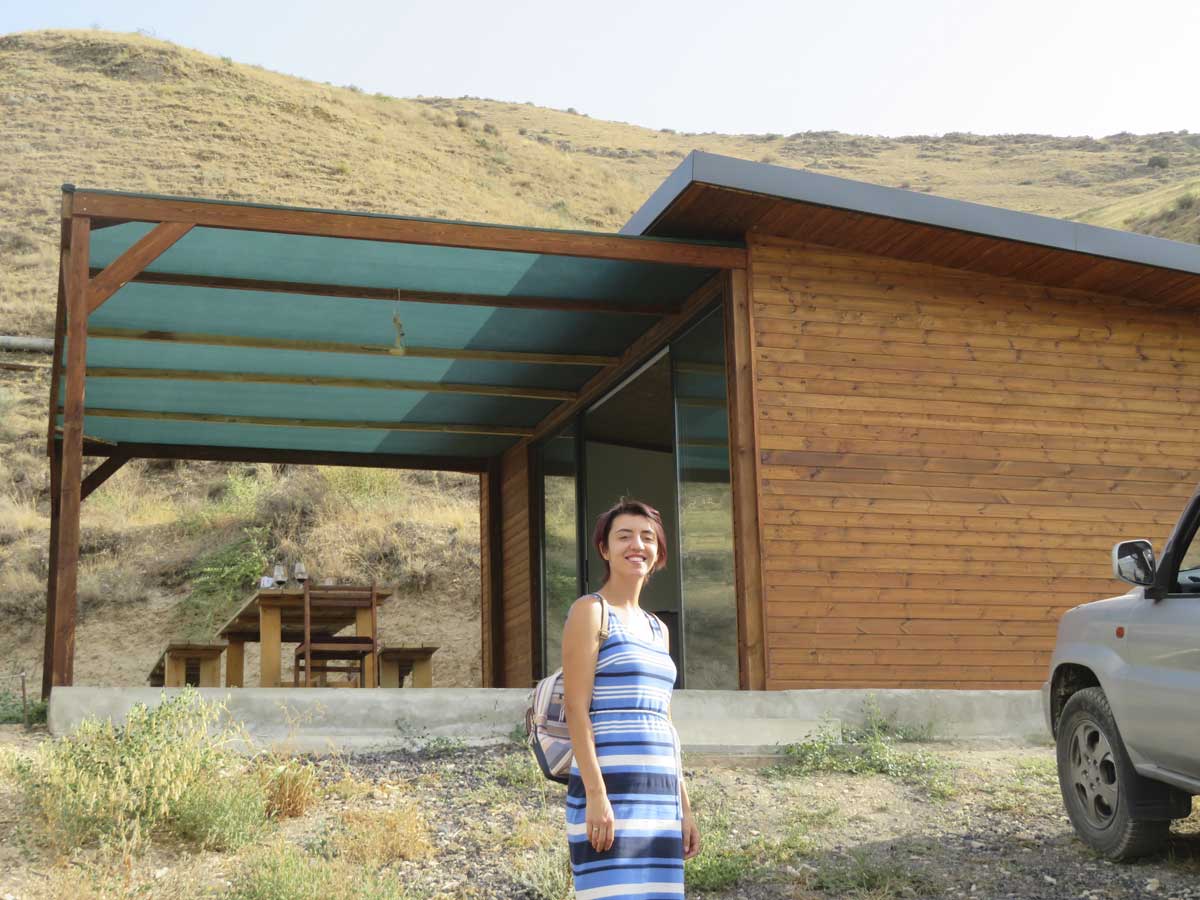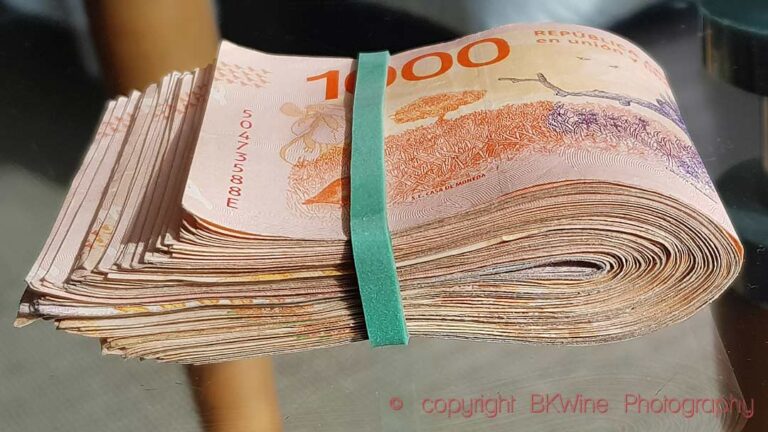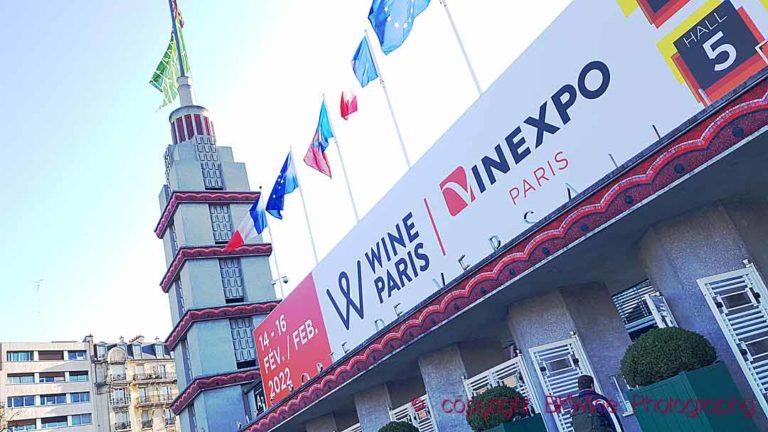Armenia is a little-known wine country although it is believed to be one of the oldest wine producing regions, with a history going back more than 6000 years. Recently, a new concept was launched to promote wine tourism and to make the wine regions better known both with locals and international visitors: The Wine Cube. With this article, we introduce BKWine Magazine’s new guest contributor, Marina Mirzabekian who gives us a first glimpse into Armenia wine.
Before moving to Armenia I knew little about their wines. I bet I am not the only one. My friends from Greece are curious when I tell them how affordable Armenian wines are. Also, locals and tourists that I host at the EVN Wine Academy during the ‘’Armenian Wines Masterclass’’, are delighted to discover the characteristics and history of the indigenous grape varieties.
Armenia is best known for its brandies. During the Soviet Union period, the country established itself as a brandy producer and exporter. Much has changed since. For example, the discovery of Areni Cave 1 where a 6,100-year-old winery was uncovered, establishing Armenia as one of the oldest wine producing countries, which has also boosted wine production in the country.
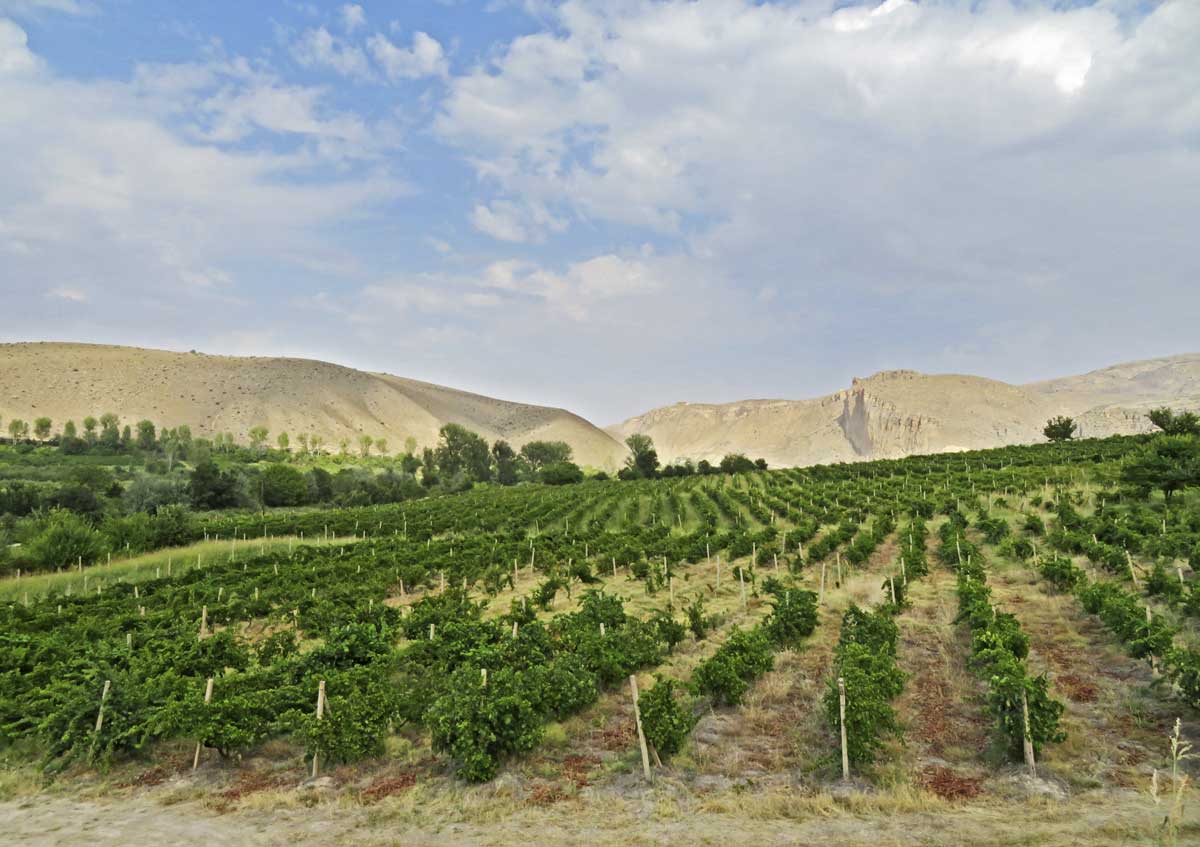
Now the major wine producing region of the country, Vayots Dzor, has an innovation to boast. The first Wine Cube in Armenia. The name speaks for itself. A Wine Cube is a small cabin located in the vineyard where one can enjoy wine where it all starts, amongst the grapes. The hosts, Narine and Nver Ghazaryan, are both the winemakers and the salespeople. The concept of the construction is minimalistic and in accordance with the surroundings.
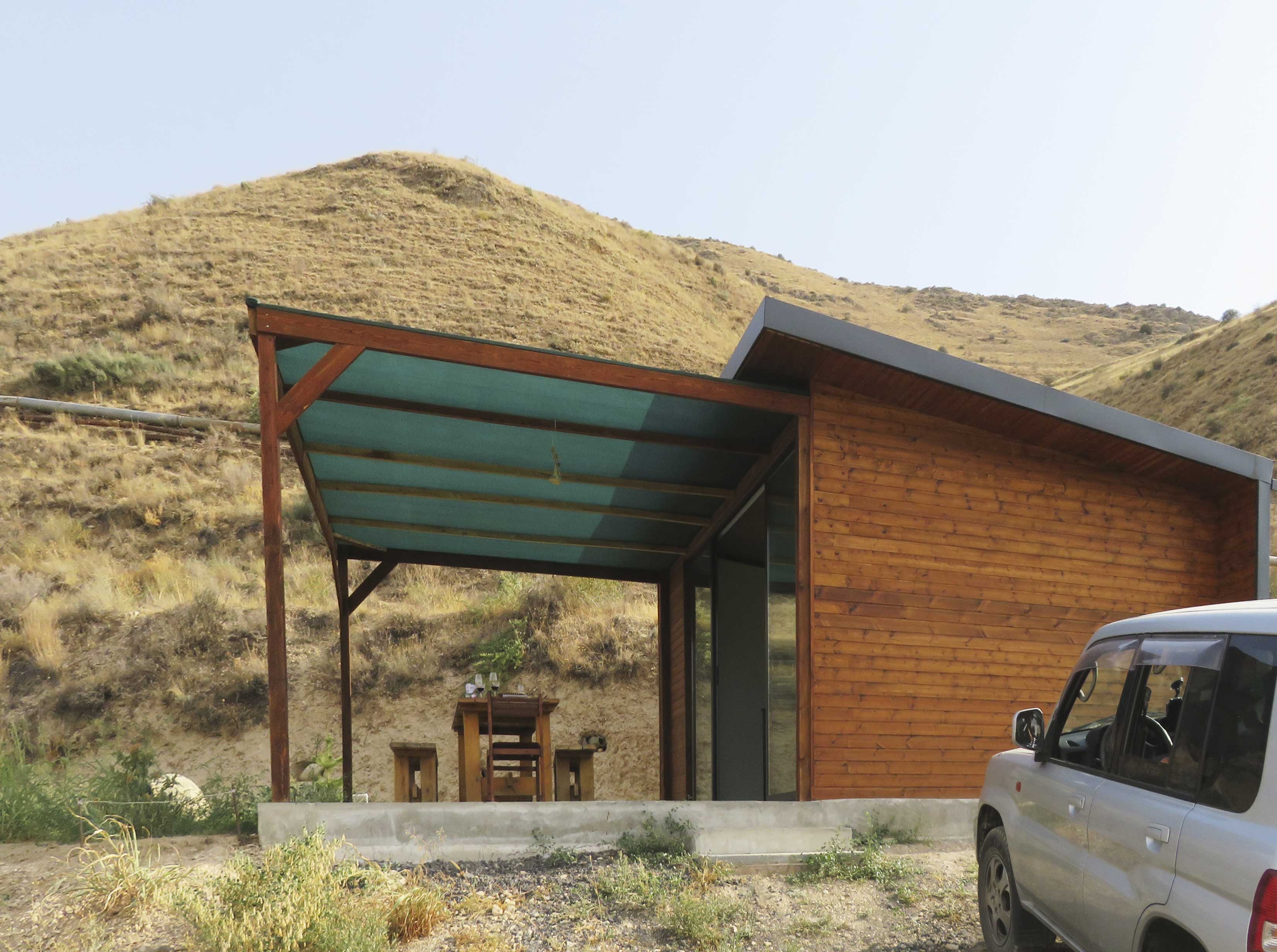
As an allocentric tourist, I did not wait until the official inaugural ceremony of the Wine Cube. The day when I went out into the vineyards was gorgeous and we seized the chance to enjoy the surroundings in total tranquillity before the place was discovered by tourists and locals. We had been in the Areni village attending the annual Areni Wine Festival but when the Wine Cube was introduced it showed that it was a totally different concept. Nestled in the owners’ vineyards, the Wine Cube was surrounded by the Areni and Voskehat grape varieties. Mountains, vineyards and serenity gave us the chance to concentrate on what was in front of us. Add a glass of Armenian wine paired with local home-made cheese, lavash (a thin bread baked in a clay oven, a favourite Armenian snack) and fruit.
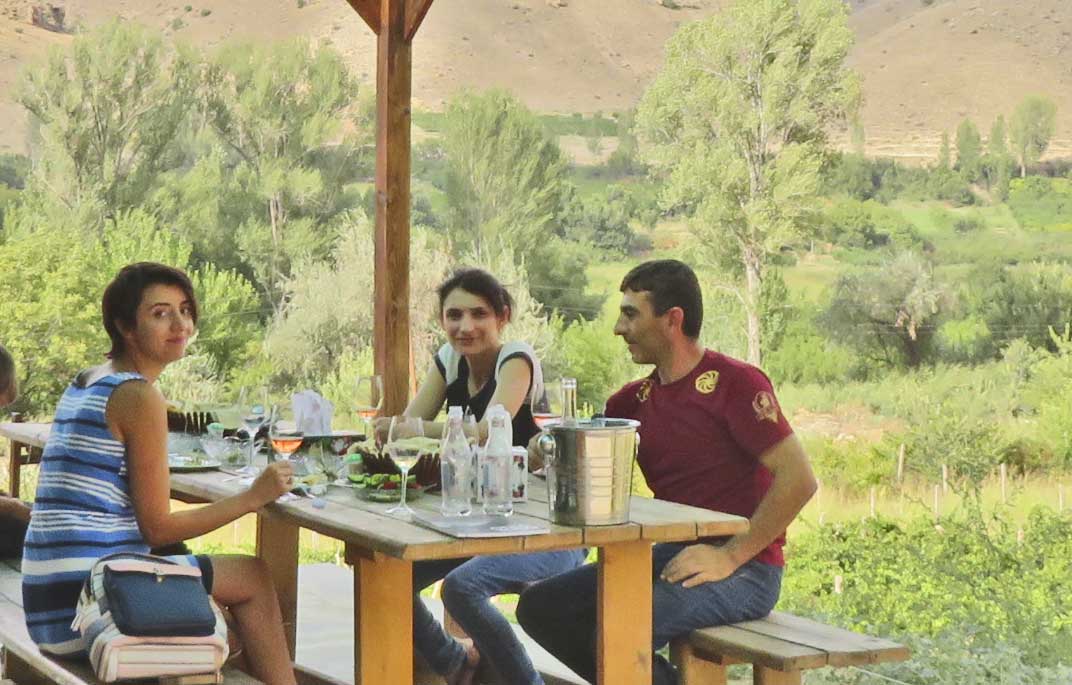
The winemakers, a young couple born and bred in the Areni village, told us about their winemaking history, about the transition from making wine for domestic use to making wine for retail sale. Also, they elaborated on the challenges they’ve had to overcome. Producing wine and being involved in tourism is challenging enough and the owners needed to start learning English. This is a necessity if one wishes to associate their business in tourism. They were delighted to be involved in tourism and to be able to support the local community as now they also have a few employees.
The only drawback for me, with the Wine Cube, was the absence of activities for children which is a common situation at wine destinations. They clung to us during our visit and were happy to draw on the karas before our departure. The karas is a traditional clay vessel where wine was kept and aged, similar to amphora or qvevri, still used by some winemakers.
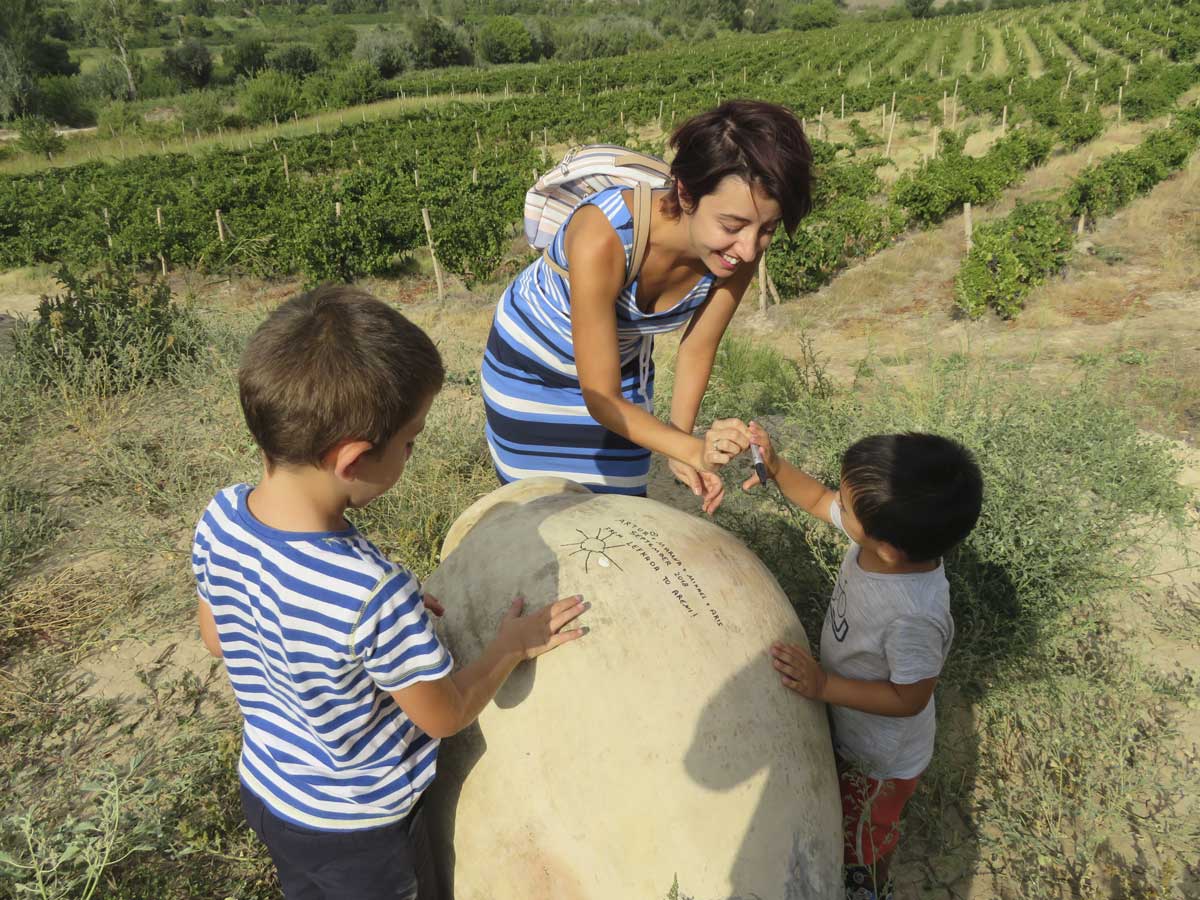
The Wine Cube is a result of the successful collaboration between a local NGO and a private business, OneArmenia and Wine Works, and hopefully, all three parties, with the winery, will equally benefit.
Wine culture in Armenia is thriving. What is needed is the appreciation of wine by locals. Only this way will they encourage tourists to taste Armenian wine, visit local wineries and take wine back home.
Narine and Nver’s Momik wines and the first Wine Cube in Armenia can and should be a model for establishing more Wine Cubes in other wine producing regions of Armenia. Anush! (Cheers in Armenian)
Marina Mirzabekian, a WSET graduate, writes about Armenian and Greek wines, born in Greece she lives in Armenia since several years.
